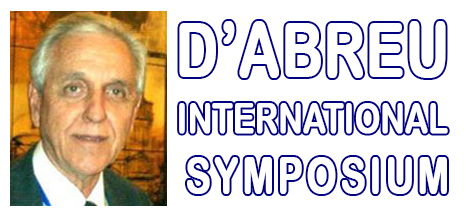List of Accepted Abstracts As of 15/12/2025: (Alphabetical Order)
Summit Plenaries
D'Abreu International Symposium (4th Intl. Symp. on Advanced Sustainable Iron and Steel Making)
Dubois International Symposium (Intl Sympo. on Sustainable Complex Metallic Systems)
Øye International Symposium (Intl Symp. on Sustainable Ionic Liquid and Aluminum Extraction and Processing)
Santilli International Symposium (Intl. Sympo. on Sustainable Mathematics Applications)
Starkey International Symposium (3rd Intl. Symp. on Sustainable Mineral Processing: Principles, Technologies and Industrial Practice)
Yagi International Symposium (2nd Intl. Symp. on Sustainable Metals & Alloys Processing)
Yang International Symposium (3rd Intl. symp. on Multiscale Material Mechanics and Multiphysics and Sustainable Applications)
2nd Intl. Symp. on Advanced Materials and Technologies for
Sustainable Energy and the Environment(AMTSEE)
2nd Intl. Symp. on Multifunctional and Smart Materials, Systems and Structures for Sustainability (MSMSSS)
3rd Intl. Symp. on Sustainable Secondary Battery Manufacturing and Recycling
3rd Intl. Symp. on Sustainable Base-metal Bio-extraction
3rd Intl. Symp. on Sustainable Cement Production
Intl. Symp. World Forum on Sustainable Coal Combustion and Processing
3rd Intl. Symp. on Sustainable Surface and Interface Engineering: Coatings for Extreme Environments
4th Intl. Symp. on Composite, Ceramic and Nano Materials Processing, Characterization and Applications
3rd Intl. Symp. on Sustainable Energy Production: Gas/Oil/Shale; Coal; Nuclear; Waste/Bioprocessing and renewables: wind/waves
5th Intl. Symp. on Environmental, Health, Policy, Legal, Management and Social Issues Related to Metals, Materials and Mineral Processing
3rd Intl. Symp. on Sustainable Production of Ferro-alloys
3rd Intl. Symp. on Sustainable Mining Operations
4th Intl. Symp. on Sustainable Molten Salt and Ionic Liquid Processing
3rd Intl. Symp. on Synthesis and Properties of Nanomaterials for Future Energy Demands
4th Intl. Symp. on Sustainable Non-ferrous Smelting and Hydro/Electrochemical Processing
2nd Intl. Symp. on Physics of Surfaces and Interfaces, from Fundamentals to
Sustainable Applications
4th Intl. Symp. on Quasi-crystals, Metallic Alloys, Composites, Ceramics and Nano Materials
3rd Intl. Symp. on Rare Earth and Platinum Group Metals: Managing and Processing
4th Intl. Symp. on Sustainable Materials Recycling Processes and Products
Intl. Symp. on Rotary Kiln Operations for Sustainable Products
5TH INTL. SYMP. ON ENVIRONMENTAL, HEALTH, POLICY, LEGAL, MANAGEMENT AND SOCIAL ISSUES RELATED TO METALS, MATERIALS AND MINERAL PROCESSING
Evaluation of a Newly Synthesized Ligand as Peptide Radionuclide Therapy on Neuro-Endocrine Tumor
S.
Choi1 ;
1KAERI, Daejon, Korea (Republic of [South] Korea);
Type of Paper: Regular
Id Paper: 426
Topic: 10Among the modalities in the treatment of malignant tumor, chemotherapy is the 1st line of the tumor therapy due to its efficient and effective way, but a lack of specificity often causes an indiscriminate toxicity to normal cells. There have been many attempts to reduce its unwanted toxicities. Small molecules like monoclonal antibodies and receptor targeting agents get the attention for the new modalities. Recently radiopeptide therapies have got the world attraction for the tumor targeting modalities due to its beneficial effect on less side effect compared to cytotoxic chemotherapies including pain palliation. In nuclear medicine, 177Lu-DOTATATE is known to be a new modality as an effective one invented so far in treating neuroendocrine tumor (NET) and it has been in clinical trials in globally due to many beneficial effects. The study still should have been extended to overcome its less effective in the large solid tumor. To improve the effectiveness of radiopeptide therapy, potent small molecules were selected to target the tumor site selectively and its labeling with a radioisotope of emitting high-energy was confirmed through present study. Also, the present study was a focus to increase a biological half-life of radio somatostatin peptide which targets the somatostatin receptor by altering the bifunctional chelator (BFCA) and at the same time introducing moiety to increase its lipophilicity. The present study will introduce a new concept of a radio-peptide therapy in the neuro-endocrine tumor. Keywords: Health; Information; Technology;
Solidification/stabilization of arsenic bearing gypsum sludge using Portland cement: effect of precalcination
X.
Zhu1 ;
1FACULTY OF METALLURGICAL AND ENERGY ENGINEERING, KUNMING UNIVERSITY OF SCIENCE AND TECHNOLOGY STATE KEY LABORATORY OF COMPLEX NONFERROUS METAL RESOURCES CLEAN UTILIZATION, Kunming, China;
Type of Paper: Regular
Id Paper: 264
Topic: 10Arsenic bearing gypsum sludge derived from lime/ferrous sulfate precipitation process is one of the biggest hazardous wastes in nonferrous metallurgy (Cu, Ni, Pb, Zn, Sn, et al.) industry in China. Nearly one million tons of arsenic bearing gypsum (ABG) sludge with different heavy metals content and leaching toxicity should have been well disposed, but it is simply preserved in a reservoir. Precalcination is proposed to improve solidification/stabilization (S/S) of ABG sludge using Portland cement. The S/S performances of ABG sludge precalcinated at the temperatures range from (200-700 ¡aC) and untreated ABG sludge is investigated by means of compressive strength, leaching characteristics, microstructure, qualitative and Acid Neutralization Capacity tests. The arsenic leaching toxicity of precalcinated ABG sludge obviously decreases when the precalcinated temperature increases to 600 ¡aC and higher. More than 40% of cement is demanded to meet the requirement for safe disposal of fresh sludge using S/S process (compressive strength >10 MPa, toxicity <5mg/L) for the uncalcinated sludge while using only 10% of cement in S/S process reaches that requirement. The stability of solidified matrix from precalcinated ABG sludge is greatly enhanced. Precalcination results in high efficiency and dependability of S/S process of ABG sludge using cement. Keywords: Arsenic; Contamination; Environment; Stabilization; Sustainability; Waste;
« Back To Technical Program
|



